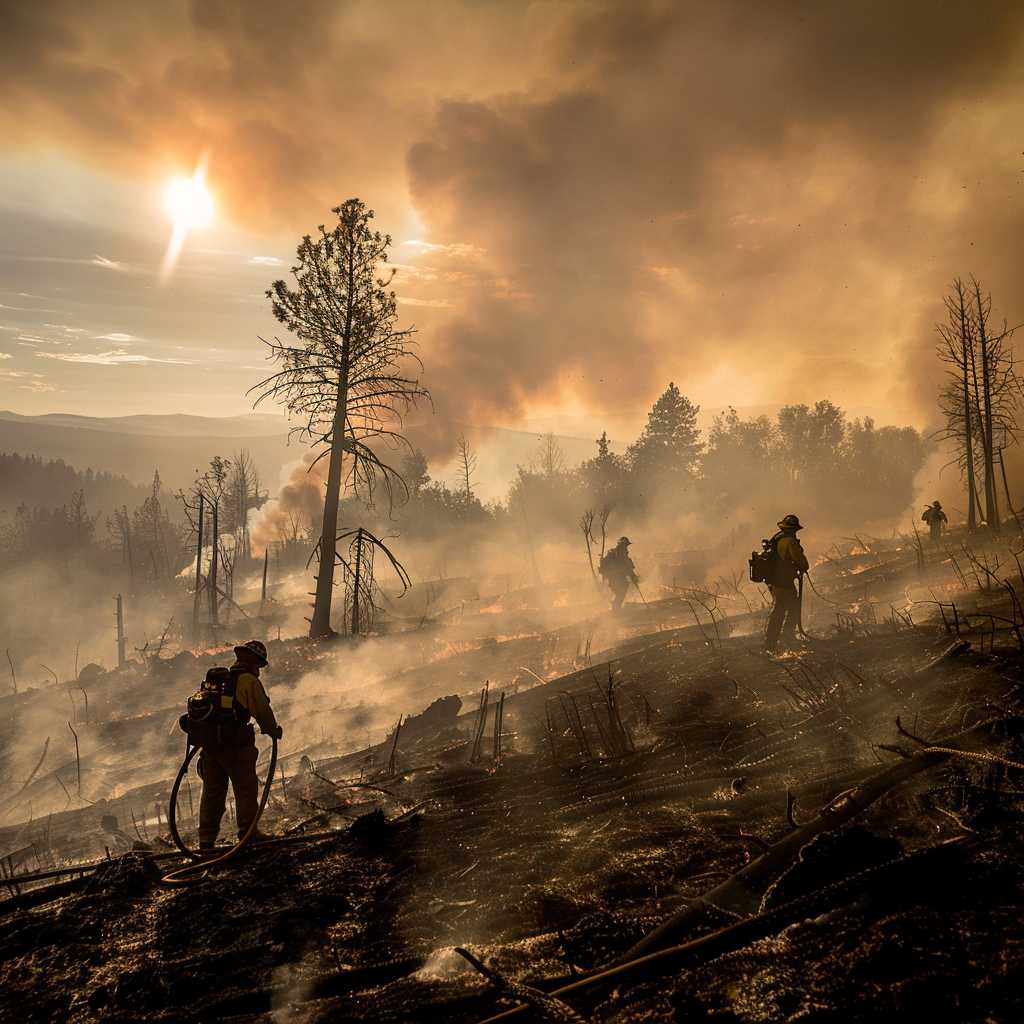Understanding the Ongoing Challenge of Texas Wildfires
Wildfires are a recurrent issue in Texas, with the state experiencing frequent and sometimes devastating fires due to its large size and varying ecosystems. From the arid Deserts in the west to the Piney Woods in the east, Texas presents a diverse tableau where wildfires can emerge depending on a combination of factors including weather patterns, human activity, and natural vegetation cycles.
Historical Context and Major Incidents
Texas has faced numerous significant wildfires throughout its history. An increased presence of non-native grasses, which burn hotter and faster than native vegetation, has exacerbated the frequency and intensity of these events. The drought of 2011 was particularly harsh, leading to one of the most destructive fire seasons ever recorded in the state. The Bastrop County Complex Fire alone destroyed over 1,600 homes and burned about 34,000 acres of land.
Factors Contributing to Texas Wildfires
Climate Conditions and Drought
One prevalent cause of wildfires in Texas is the sustained hot, dry climate frequently experienced across many parts of the state. These conditions dry out vegetation, turning it into easily combustible fuel. Climate change is contributing to longer periods of drought, followed by heavy downpours that enable rapid vegetation growth—subsequently leading to increased fuel for wildfires during the dry seasons.
Human Activity
Another leading cause of wildfires in Texas is human activity. Accidentally sparked fires from equipment use, discarded cigarettes, or unattended campfires account for a substantial number of annual wildfire incidents. Arson or intentional burning without regard for conditions can also lead to uncontrolled burns that escalate into larger wildfires.
Natural Causes
Lightning strikes are among natural causes that ignite fires across Texas’s landscape. While most natural fires might be smaller and more contained, they can erupt into larger incidents if not promptly addressed or if weather conditions worsen.
Strategies for Wildfire Management and Response
Preventive Measures
Mitigating wildfire risks involves implementing stringent preventive measures such as controlled burns, clearing out potential fuel such as dead trees and thick underbrush, and promoting public awareness about wildfire prevention. Fire detection systems are also crucial for early spotting of potential wildfires.
Firefighting Efforts
When a wildfire does occur, immediate deployment of local and sometimes interstate firefighting teams is vital in controlling and extinguishing the blaze. Assets include ground personnel, firefighting aircraft like helicopters and planes equipped to drop water or fire retardant materials, and heavy machinery to create firebreaks.
Recovery and Rehabilitation
Post-fire efforts focus on recovery and rehabilitation to restore ecosystems affected by fires. These may involve reseeding efforts, erosion control practices, and rebuilding communities with enhanced fire prevention standards.
Adaptation and Building Community Resilience
There is also an increasing emphasis on adapting land management practices and building structures capable of withstanding fire exposure as part of community resilience strategies in Texas. This includes creating defensible spaces around properties by reducing ignitable materials within an immediate radius and constructing buildings with less flammable materials.
Recent Texas Wildfires: A Snapshot
Major wildfire incidents continue to cause concern in Texas. Recent fires have mobilized state resources and highlighted challenges related to changing climate conditions, urban-growth boundaries, and resource allocation for firefighter services.
Current Legislation and Policies
State laws that address prescribed burns, arson penalties, and emergency condition management provide a legal framework for dealing with wildfires in Texas. It is imperative for these regulations to be revised frequently to cope with emerging challenges posed by increasing wildfire frequencies.
Notes
- The 2011 Texas fire season remains one of the most destructive in the state’s history reaching an estimated total cost in damages-end
- Preventive measures for wildfires in Texas include creating 30 feet of defensible space around properties-end
- Legislation affecting prescribed burns regulates when and how landowners can conduct area burning to prevent accumulation of potential wildfire fuel-end
Image Description
A landscape ravaged by recent fires with charred trees against a backdrop of smoke-filled skies, while firefighters work in the foreground trying to control hotspot remnants.
